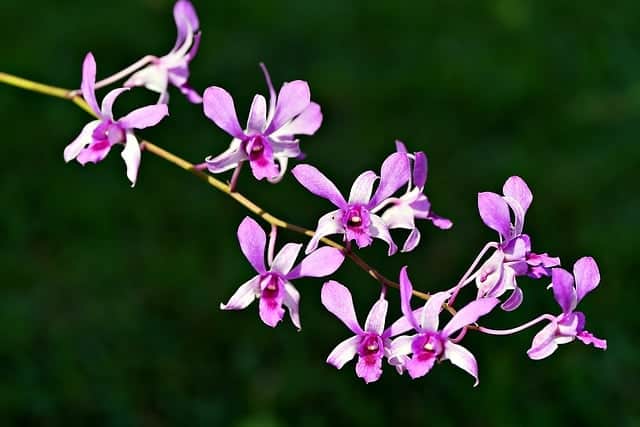Orchids are beautiful and exotic plants that are known for their unique and delicate flowers. They require a specific type of care, including the use of specialized fertilizers. However, many people wonder if they can use orchid food on other plants. The answer is yes, but there are some important considerations to keep in mind.
Understanding orchid food is essential before using it on other plants. Orchid food is formulated to meet the specific nutritional needs of orchids. It typically contains higher levels of nitrogen, phosphorus, and potassium than regular plant food.
These nutrients are essential for the growth and development of orchids, but they can also benefit other plants. However, it is important to understand the nutritional composition of orchid food before using it on other plants.
Using orchid food on other plants can have both risks and benefits. While it can provide essential nutrients, it can also lead to over-fertilization and damage to the plant. Additionally, the pH of orchid food may not be suitable for other plants, which can affect their ability to absorb nutrients.
It is essential to understand the specific needs of each plant before using orchid food. Alternatives to orchid food may also be available, such as all-purpose plant food or organic fertilizers.
Key Takeaways
- Orchid food can be used on other plants, but it is important to understand its nutritional composition and the specific needs of each plant.
- Using orchid food on other plants can have both risks and benefits, including over-fertilization and pH imbalances.
- Alternatives to orchid food may be available, such as all-purpose plant food or organic fertilizers.
Check out these other related posts:
- Can I Use Citrus Fertilizer on Other Plants?
- Can I Use Cactus Soil for Spider Plant?
- Can I Use Cactus Fertilizer for Other Plants?
Understanding Orchid Food
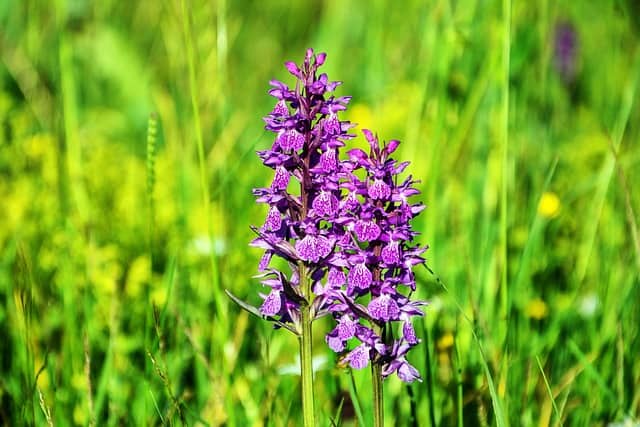
Orchid food, also known as orchid fertilizer, is a specially formulated type of plant food that is designed to provide the necessary nutrients for orchids to thrive. It is typically high in nitrogen, which is essential for healthy leaf growth, and contains other important macronutrients such as phosphorus and potassium.
The N-P-K ratio, which stands for nitrogen, phosphorus, and potassium, is an important factor to consider when choosing an orchid food. This ratio indicates the relative amounts of each nutrient in the fertilizer. For example, a fertilizer with an N-P-K ratio of 30-10-10 contains 30% nitrogen, 10% phosphorus, and 10% potassium.
It is important to note that while orchid food can be beneficial for other plants, it is not a one-size-fits-all fertilizer. Using orchid food on other plants without considering their specific nutrient needs can actually do more harm than good.
When using orchid food on other plants, it is important to check the N-P-K ratio to ensure that it is appropriate for the plant’s needs. For example, plants that require a lot of nitrogen, such as leafy greens, may benefit from orchid food that is high in nitrogen.
On the other hand, plants that require more phosphorus, such as flowering plants, may require a different type of fertilizer.
Nutritional Composition of Orchid Food
Orchid food is a specialized fertilizer created to provide the specific nutrients that orchids need to grow and bloom. While it is primarily designed for orchids, it can also be used on other plants. Understanding the nutritional composition of orchid food can help gardeners determine if it is suitable for their plants.
Macronutrients
Orchid food typically contains three macronutrients: nitrogen, phosphorus, and potassium. These are essential for plant growth and development.
Nitrogen is responsible for promoting leaf and stem growth, as well as overall plant vigor. Phosphorus is essential for root development and flowering, while potassium helps regulate water balance and disease resistance.
The exact ratio of these macronutrients varies depending on the brand of orchid food. However, a common ratio is 30-10-10, which means it contains 30% nitrogen, 10% phosphorus, and 10% potassium.
Micronutrients
In addition to macronutrients, orchid food also contains several micronutrients. These are essential for healthy plant growth but are required in smaller quantities than macronutrients.
Calcium, magnesium, iron, zinc, copper, boron, manganese, and molybdenum are some of the micronutrients that may be included in orchid food. These micronutrients play a vital role in various plant processes, including photosynthesis, enzyme activation, and hormone synthesis.
The exact composition of micronutrients in orchid food varies depending on the brand and formulation. However, most orchid food products contain a balanced blend of micronutrients to support healthy plant growth.
The Specific Needs of Orchids

Orchids are a unique type of plant that require specific care to thrive. To understand whether or not orchid food can be used on other plants, it is important to understand the specific needs of orchids. This section will cover the specific needs of orchids in regards to their roots, foliage, blooming, and growth.
Orchid Roots and Foliage
Orchids have unique roots that are adapted to their natural environment. These roots are designed to absorb water and nutrients from the air, rather than from soil. In addition, orchid foliage is adapted to absorb moisture and nutrients from the air as well.
Because of these unique adaptations, orchids require a specific type of fertilizer that is designed to meet their unique needs. Orchid fertilizer typically contains higher levels of nitrogen than other fertilizers, which is important for the growth and development of orchid roots and foliage.
Orchid Blooming and Growth
In addition to their unique roots and foliage, orchids also have specific needs when it comes to blooming and growth. Orchids require a specific balance of nutrients in order to bloom and grow properly.
Orchid fertilizer typically contains a balanced mix of nitrogen, phosphorus, and potassium, which are essential for the growth and development of orchids. In addition, orchids require specific
Using Orchid Food on Other Plants
Orchid food is a type of fertilizer that is specifically formulated for orchids. However, it can also be used on other plants to provide them with the nutrients they need to thrive. Here are some tips for using orchid food on other plants.
Feeding Houseplants
Orchid food can be used to feed a variety of houseplants, including ferns, African violets, and peace lilies. The nutrients in orchid food are similar to those found in other types of plant food, including nitrogen, phosphorus, and potassium.
However, orchid food is often formulated to be more acidic than other types of plant food, which can be beneficial for plants that prefer acidic soil.
To use orchid food on houseplants, simply follow the instructions on the package. Most orchid foods are designed to be mixed with water and applied directly to the soil. Be sure to water your plants thoroughly after applying the fertilizer to help distribute the nutrients evenly.
Feeding Garden Plants
Orchid food can also be used to feed garden plants, including vegetables, fruits, and flowers. However, it is important to choose the right type of orchid food for your plants. Some orchid foods are formulated for indoor use only and may not be suitable for outdoor plants.
When using orchid food on garden plants, it is important to apply it in the right amounts. Too much fertilizer can burn the roots of your plants, while too little may not provide the nutrients they need to grow.
Be sure to follow the instructions on the package carefully and adjust the amount of fertilizer you use based on the size and type of plant you are feeding.
The Impact of pH on Plant Nutrition
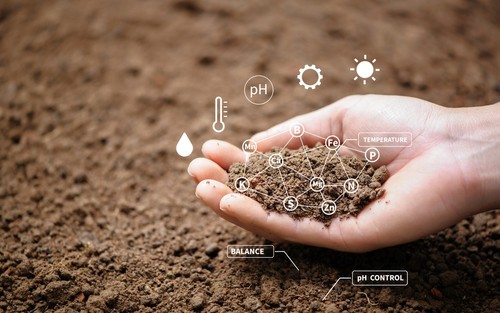
Understanding Soil pH
Soil pH is a measure of the acidity or alkalinity of soil. It is measured on a scale of 0 to 14, with 7 being neutral. A pH below 7 indicates acidic soil, while a pH above 7 indicates alkaline soil. Most plants prefer a soil pH between 6 and 7.5. However, the ideal pH level for plants varies depending on the type of plant.
The pH level of soil affects the availability of nutrients to plants. Some nutrients, such as nitrogen, phosphorus, and potassium, are only available to plants within a certain pH range. For example, phosphorus is most available to plants in soil with a pH between 6.0 and 7.5. If the pH is too high or too low, the phosphorus becomes unavailable to the plant.
Adjusting pH for Different Plants
Adjusting soil pH can be done by adding materials to the soil that are acidic or alkaline, depending on the needs of the plant. For example, adding sulfur to soil can lower the pH, while adding lime can raise the pH.
When using orchid fertilizer on other plants, it is important to consider the pH level of the soil. Orchid fertilizers are typically formulated to be slightly acidic, with a pH between 5.5 and 6.5. This pH level is ideal for orchids, but it may not be suitable for all plants.
Some plants, such as blueberries, prefer acidic soil with a pH between 4.5 and 5.5. In this case, using orchid fertilizer could be beneficial. However, other plants, such as tomatoes, prefer a slightly alkaline soil with a pH between 6.0 and 7.0. Using orchid fertilizer on these plants could lead to nutrient deficiencies.
Potential Risks and Benefits
Benefits of Orchid Food
Orchid food is packed with essential macronutrients and micronutrients that many plants need to thrive. These nutrients include nitrogen, phosphorus, and potassium (NPK), which are vital for healthy plant growth.
Orchid food also contains other micronutrients such as calcium, magnesium, and iron, which are important for healthy root development and overall plant health.
Using orchid food on other plants can provide a range of benefits. For instance, it can help to promote healthy foliage growth, increase flower blooms, and improve overall plant health. Additionally, orchid food can help to prevent nutrient deficiencies that can lead to stunted growth or yellowing leaves.
Potential Harm of Over-Fertilization
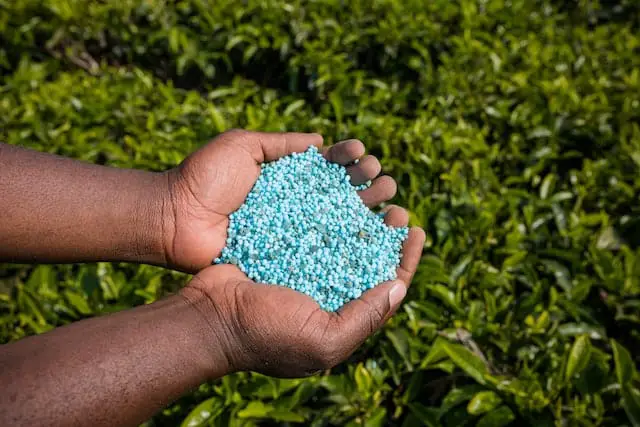
While orchid food can be beneficial for other plants, it is important to use it correctly to avoid over-fertilization. Over-fertilization can lead to a build-up of salts in the soil, which can damage roots and prevent plants from absorbing nutrients. This can cause stunted growth, yellowing leaves, and even plant death.
Additionally, over-fertilization can make plants more susceptible to diseases, pests, and infections. When plants are over-fertilized, they become weaker and less able to fight off these threats. This can lead to a range of problems, from root rot to fungal infections.
To avoid these potential harms, it is important to follow the instructions on the orchid food packaging and to only use it as directed. It is also important to monitor plants for signs of over-fertilization, such as yellowing leaves or stunted growth, and to adjust the fertilizer application accordingly.
Alternatives to Orchid Food
When it comes to fertilizing plants, orchids have a reputation for being finicky. While orchid food is formulated to provide the specific nutrients that orchids need, it’s not always necessary to use it. In fact, there are a variety of alternatives that can be used to fertilize both orchids and other plants.
1. Regular Fertilizers
One of the simplest alternatives to orchid food is to use a regular fertilizer. Most fertilizers contain a blend of nitrogen, phosphorus, and potassium (N-P-K), which are the primary macronutrients that plants need to grow.
While orchids have unique nutrient requirements, they still need these macronutrients, as well as micronutrients like iron, magnesium, and calcium.
When using regular fertilizer on orchids, it’s important to dilute it to half strength or less. Orchids are sensitive to salt buildup, and regular fertilizer can be too strong for them if used at full strength. It’s also important to choose a fertilizer that has a balanced N-P-K ratio, such as a 10-10-10 or 20-20-20 blend.
2. Homemade Fertilizers
Another alternative to orchid food is to make your own homemade fertilizer. There are a variety of recipes available, but some common ingredients include fish emulsion, crushed eggshells, and Epsom salt.
Fish emulsion is a natural fertilizer that is made from fish waste. It’s high in nitrogen, which makes it a good choice for promoting leafy growth. Crushed eggshells are a good source of calcium, which is important for strong cell walls and healthy roots. Epsom salt is high in magnesium, which is important for chlorophyll production and photosynthesis.
To make a homemade fertilizer, simply mix the ingredients together and dilute with water. It’s important to use caution when using homemade fertilizers, as they can be too strong if not diluted properly. It’s also important to avoid using ingredients that can be harmful to plants, such as salt or vinegar.
Conclusion
Using orchid fertilizer on other plants is possible and can be beneficial for their growth and development. Orchid fertilizer contains essential macronutrients and micronutrients that many plants need to thrive, including nitrogen, phosphorus, and potassium (NPK).
However, it is important to note that not all plants may benefit from orchid fertilizer, and it is crucial to read the product label carefully to determine how much fertilizer to use and when to apply it. It is also essential to ensure that the plant being fertilized is compatible with orchid fertilizer before using it.
Frequently Asked Questions
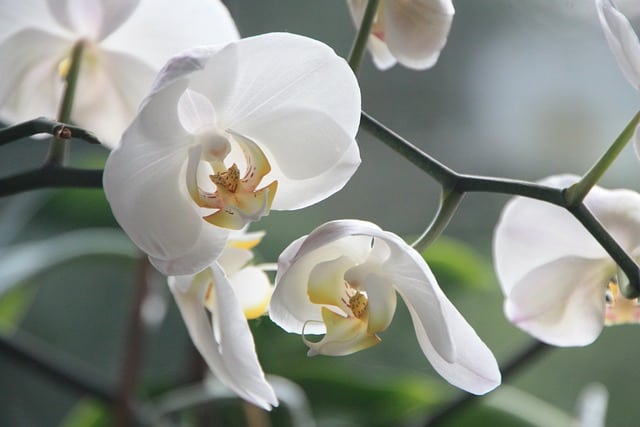
Can I use orchid fertilizer on succulents?
Yes, you can use orchid fertilizer on succulents. However, it is important to dilute the fertilizer to half strength before applying it to succulents. Succulents require less fertilizer than orchids, so using full strength orchid fertilizer can cause damage to the plants.
Can I use orchid fertilizer on monstera?
Yes, orchid fertilizer can be used on monstera. However, it is important to dilute the fertilizer to half strength before applying it to monstera. Monstera plants are sensitive to over-fertilization, and using full strength orchid fertilizer can cause leaf burn.
Can I use orchid fertilizer on ferns?
Yes, orchid fertilizer can be used on ferns. Ferns require a balanced fertilizer with equal amounts of nitrogen, phosphorus, and potassium. Orchid fertilizer is high in nitrogen, so it is important to dilute it to half strength before applying it to ferns.
Can I use orchid fertilizer on snake plant?
Yes, orchid fertilizer can be used on snake plants. However, it is important to dilute the fertilizer to half strength before applying it to the snake plant. Snake plants require less fertilizer than orchids, so using full strength orchid fertilizer can cause damage to the plants.
Can I use orchid fertilizer on hydrangeas?
Yes, orchid fertilizer can be used on hydrangeas. Hydrangeas require a fertilizer that is high in phosphorus to promote blooming. Orchid fertilizer is high in phosphorus, so it can be a good choice for hydrangeas. However, it is important to dilute the fertilizer to half strength before applying it to hydrangeas.
Can I use orchid fertilizer on peace lily?
Yes, orchid fertilizer can be used on peace lilies. However, it is important to dilute the fertilizer to half strength before applying it to peace lily. Peace lilies require less fertilizer than orchids, so using full strength orchid fertilizer can cause damage to the plants.

Hey, I’m Lisa and I’ve been an avid gardener for over 30 years. I love writing, talking and living in the garden! Feel free to connect with me on my socials below

